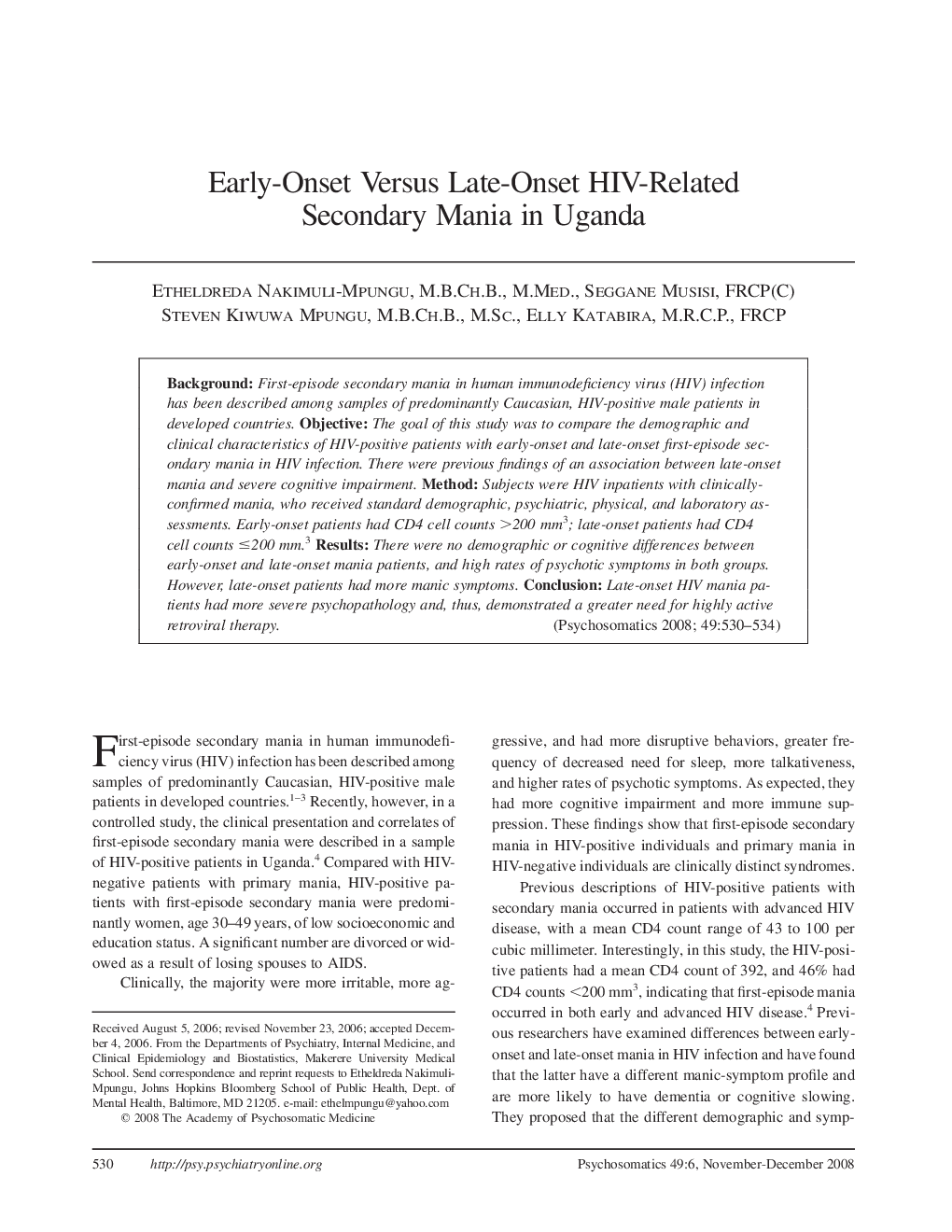| کد مقاله | کد نشریه | سال انتشار | مقاله انگلیسی | نسخه تمام متن |
|---|---|---|---|---|
| 338068 | 547664 | 2008 | 5 صفحه PDF | دانلود رایگان |

BackgroundFirst-episode secondary mania in human immunodeficiency virus (HIV) infection has been described among samples of predominantly Caucasian, HIV-positive male patients in developed countries.ObjectiveThe goal of this study was to compare the demographic and clinical characteristics of HIV-positive patients with early-onset and late-onset first-episode secondary mania in HIV infection. There were previous findings of an association between late-onset mania and severe cognitive impairment.MethodSubjects were HIV inpatients with clinically-confirmed mania, who received standard demographic, psychiatric, physical, and laboratory assessments. Early-onset patients had CD4 cell counts >200 mm3; late-onset patients had CD4 cell counts ≤200 mm.3ResultsThere were no demographic or cognitive differences between early-onset and late-onset mania patients, and high rates of psychotic symptoms in both groups. However, late-onset patients had more manic symptoms.ConclusionLate-onset HIV mania patients had more severe psychopathology and, thus, demonstrated a greater need for highly active retroviral therapy.
Journal: Psychosomatics - Volume 49, Issue 6, November–December 2008, Pages 530–534